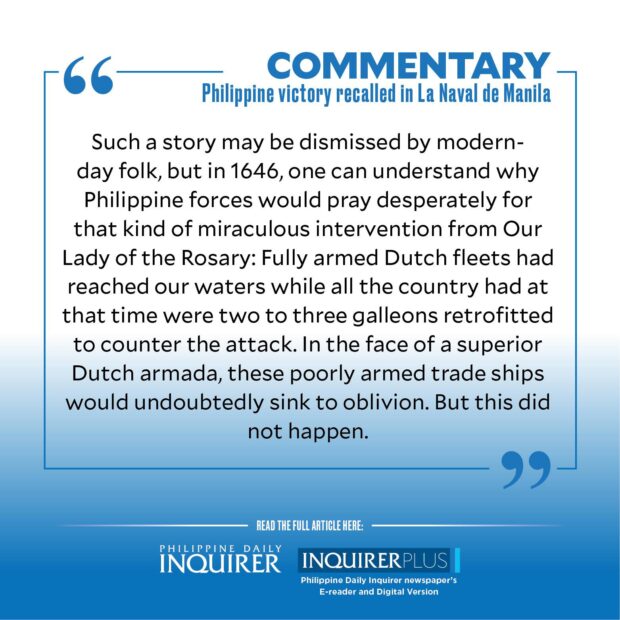During the era of the Manila Galleon Trade in the 1600s, the Philippines faced numerous challenges that threatened the flow of Asian goods across the seas. From pirate raids and disease among the crew to typhoons in the Pacific Ocean, the safety of these trading ships was always at risk. The people of the Philippines would beseech the heavens, praying for the safe passage of the ships carrying their investments to the Americas.
However, a new threat emerged when the Dutch set their sights on monopolizing the overseas spice trade. They established the Dutch East India Co., which quickly transformed into an intercontinental business enterprise. While it operated as a company, it also carried out the interests of the Dutch state, granting it administrative powers similar to a quasi-government. The Dutch East India Co. could mint coins, maintain an army, and even wage wars in Southeast Asia. By 1641, the Dutch had formed a strong alliance with Japan and saw the Philippines as an obstacle in the trade route between Batavia and Dejima. Not content with obstructing the Manila-Acapulco trade alone, the Dutch began harassing the Chinese junks that supplied goods and seizing galleons returning from New Spain. Their ultimate goal was to absorb the Philippines into their expanding multinational enterprise, and remove Manila from the equation entirely.
Intriguingly, during this time, the people of Manila found solace and devotion in Our Lady of the Rosary at the Santo Domingo Church in Intramuros. This late 16th-century ivory image of the Madonna and Child was renowned for its reported miracles. One particularly memorable miracle occurred in 1613 when the Blessed Mother purportedly appeared before a wounded man on the coast of Mindoro. The miraculous icon at Santo Domingo Church bore mud stains on its vestments, indicating signs of travel. When news of this man and his encounter spread, the peculiar stains finally made sense to the people.
Modern skeptics may dismiss such stories, but in 1646, the people of the Philippines understood why their forces would pray desperately for miraculous intervention from Our Lady of the Rosary. The Dutch armada was vastly superior, while the Philippines only possessed two to three poorly armed retrofitted galleons to defend against the attack. These trade ships were no match for the powerful Dutch fleets.
But something remarkable happened. Over the course of seven months, the Philippine forces emerged victorious in five naval battles against the Dutch. The Filipino-Spanish crew attributed their triumphs to their unwavering devotion to Our Lady of Manila. They prayed the rosary and recited the litany before her image on the ship during the expeditions. With a rosary in one hand and a torch in the other, the artillerymen fired cannons, shouting “Viva la Virgen!” in salutation. In gratitude, the soldiers would walk barefoot to Santo Domingo upon reaching land to venerate the miraculous icon. This image later came to be known as “Our Lady of La Naval de Manila” in honor of the naval victories.
In 1652, the cathedral chapter of Manila confirmed the Battles of La Naval de Manila as miraculous. Authorities decreed that a feast must be instituted annually to commemorate this miracle in honor of Our Lady. Santo Domingo Church continues to hold this festival every second Sunday of October. The celebration culminates in a grand rosary procession to the church, reenacting the soldiers’ vow made in 1646. The victories of La Naval have been lauded as a testament to the triumph of the Catholic faith in the Philippines.
However, the significance extends beyond religious devotion. Had the Dutch emerged victorious in the Battles of La Naval de Manila, it is likely that the Philippines would have become part of the Dutch East India Co., later constituting modern-day Indonesia. The Philippine islands could have become just another geographical designation in the Indonesian archipelago. Fortunately, the victories of La Naval charted a different course for the Philippines, leading to its path towards self-determination and freedom. It serves as a reminder of how Our Lady of the Rosary holds a special place in the nation’s history.
(Note: The year 2023 marks the 50th anniversary of the proclamation of Our Lady of La Naval as the patroness of Quezon City. The festivities at Santo Domingo Church, Quezon City, with the theme “Mahal na Birhen ng La Naval: Pintakasi ng Sambayanang Kristiyano,” began with the enthronement of the miraculous image on September 28. The novena Masses will continue until October 7, culminating in the feast day celebration and traditional “La Naval” procession on October 8.)
Mervin Gonzales Lomague, OP, serves as a member of the Cultural Heritage Committee of the Dominican Province of the Philippines.
Denial of responsibility! Vigour Times is an automatic aggregator of Global media. In each content, the hyperlink to the primary source is specified. All trademarks belong to their rightful owners, and all materials to their authors. For any complaint, please reach us at – [email protected]. We will take necessary action within 24 hours.


